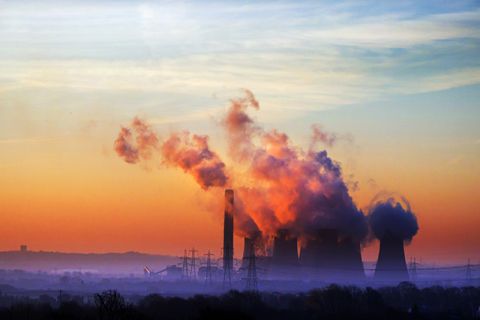Unless you are Donald Trump it is becoming harder and harder to deny the existence of climate change. The world, for the most part, is starting to wake up to the fact that our planet is changing and not necessarily for the better. That is why in the Paris Climate Agreement one of the main focuses is to, “foster climate resilience and low greenhouse gas emissions development.” Now thanks to a happy accident scientist have found a way to convert carbon dioxide to ethanol.
The ramifications of such a discovery are still not fully understood but the scientist and researchers at the Department of Energy’s Oak Ridge National Laboratory (ORNL) are working hard to find out. At this point they are purely focusing on the hopes of reducing climate change.

The accidental discovery came when the group of scientist used a catalyst made of carbon, copper and nitrogen, added voltage and brought it into the the presence of carbon dioxide. The reaction resulted in a new substance, ethanol.
ORNL’s lead author, Adam Rondinone, describes the event as, “pushing [the] combustion reaction backwards.”
Rodinone, in a press release stated, “By using common materials, but arranging them with nanotechnology, we figured out how to limit the side reactions and end up with the one thing that we want.”
Climate change is man made. One of the many ways we have contributed to climate change is by pumping the atmosphere full of carbon dioxide, a key greenhouse gas and the lead target of most rules and regulations focused on tackling the issue. Scientist have long stated we will need to find a way to remove the CO2 from the atmosphere if we are going to be able to curve advancing climate disasters.

There have been many proposals on how to go about removing the CO2 from the air. Most methods rely on a capture system and a depends on costly underground storage for the greenhouse gas. Unfortunately these systems are expensive and ineffective.
The scientists at ORNL believe the method they have produced could easily be scaled to an industrial level. Companies choosing to participate, most likely energy companies, would be able to use the resulting ethanol as a low cost battery to store energy produced by other clean energy sources, such as wind or solar.
“A process like this would allow you to consume extra electricity when it’s available to make and store as ethanol,” Rondinone said. “This could help to balance a grid supplied by intermittent renewable sources.”
Ethanol has a higher fuel density than most current batteries. This means more energy could be stored in a smaller space like a rooftop or Tesla charging station. All though the team at ORNL admits the catalyst may not be perfect it is certainly a step in the right direction. They plan to continue research, and work to improve the efficiency of their discovery














I hardly droip responses, but after reading throughh a few of the responses on this page
Scientists Find Waay To Fight Climate Change By Turning Carbon Dioxide Into Ethanol – nerds Magazine.
I actually doo have some questions foor you if it’s allright.
Coould it be only me or do some of these comments
appear like they are written by brain dead visitors?
😛 And, if you are writing at additional sites, I would like too follow anything fresh you have to post.
Could you lixt of the complete urls of all your public pages like
your twitter feed, Facebook page oor linkedin profile?
I’ve seen close to a dozen articles on this discovery over the last week, but am confused that none have mentioned the negative effects of using ethanol as a widespread fuel. A cursory Google search will return a number of articles and bodies of research which cite significantly higher levels of ground-level ozone in geographies where E85 or E100 were used as auto fuels. Global deforestation initiatives to plant engineered corn for ethanol (also a significant consumer of artificial fertilizer) also leave a significant environmental impact. I’m curious as to why none of this week’s articles address the environmental cons of ethanol as fuel?